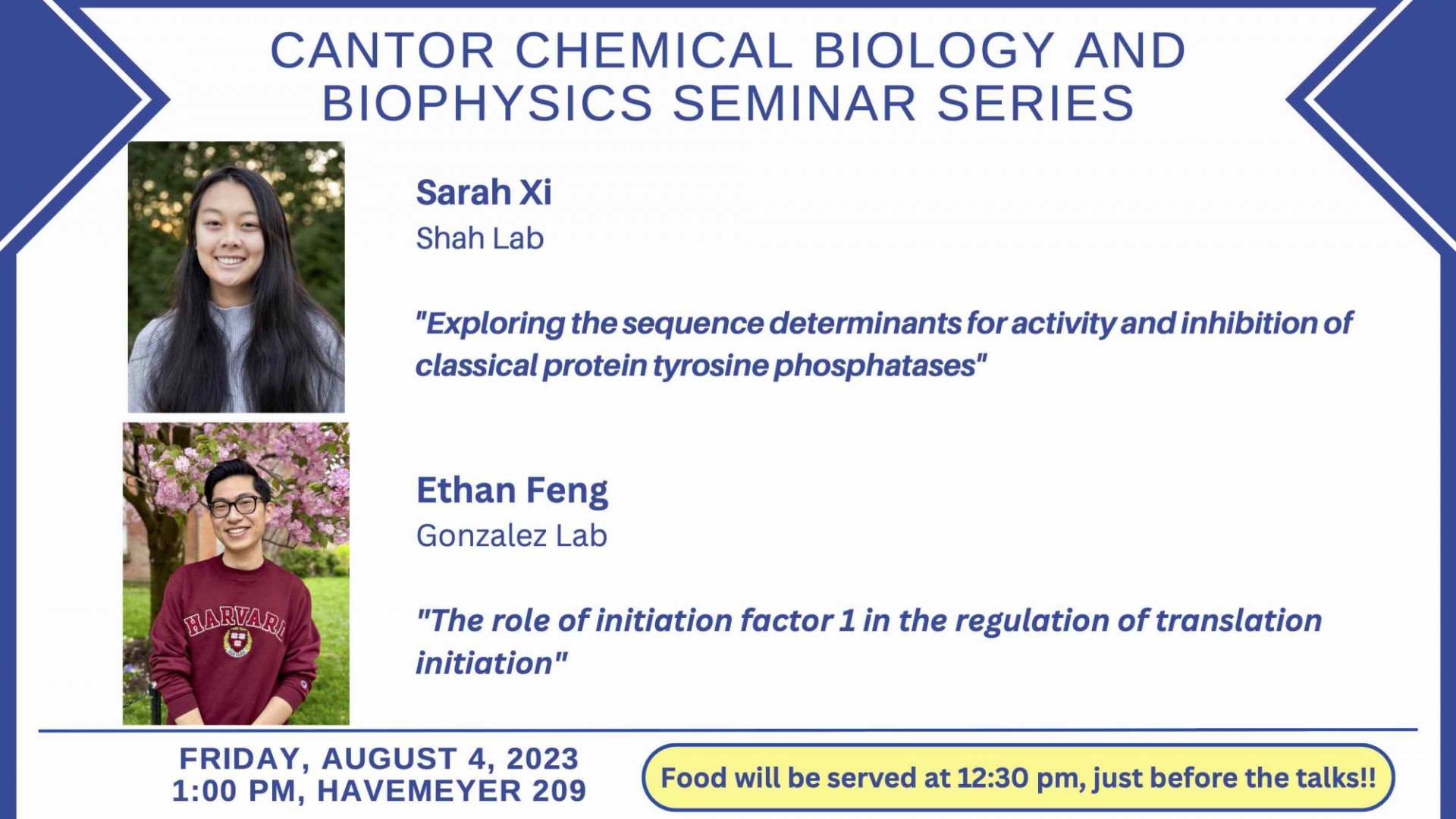Exploring the sequence determinants for activity and inhibition of classical protein tyrosine phosphatases
Presented by Sarah Xi
Abstract:
Protein tyrosine phosphorylation is a prevalent post-translational modification that modulates enzyme activity, protein localization, protein stability, and protein-protein interactions. Protein tyrosine phosphatases (PTPs) are an important family of signaling enzymes that catalyze the dephosphorylation of tyrosine residues on proteins. Many diseases including cancers arise from the dysregulation of tyrosine phosphorylation, and tyrosine phosphatases have been proposed as therapeutic targets for the treatment of these diseases. The largest subfamily of tyrosine phosphatases, the classical PTPs, are characterized by a highly conserved catalytic cysteine and two additional motifs known as the WPD loop and the Q-loop, which facilitate a conserved catalytic mechanism. Despite these conserved features, the intrinsic catalytic rates of different PTPs, and their susceptibility to covalent inhibition, span multiple orders of magnitude. The molecular basis for these differences is still unknown. We characterized the intrinsic catalytic activities of numerous PTPs across the classical PTP subfamily. Moreover, we tested an array of electrophiles and fragment scaffolds to investigate the required chemical parameters for the covalent inhibition of PTPs. Our analysis juxtaposes the intrinsic electrophilicity of these compounds with their potency against several classical PTPs, revealing chemotypes that inhibit tyrosine phosphatases while minimizing excessive, potentially non-specific reactivity.We also assessed sequence divergence at key residues in PTPs to explain their differential activity and susceptibility to covalent inhibition. We are now exploring two parallel methods to analyze sequence-structure-function relationships in tyrosine phosphatases: (1) we are pursuing high-throughput scanning mutagenesis of the WPD loop in PTPs using a yeast selection assay and (2) we are using statistical coupling analysis to determine groups of covarying amino acids in PTPs, which will be used to design mutant PTPs for further characterization. We anticipate that our study will help elucidate the regulatory mechanisms of PTPs and guide the development of covalent probes and inhibitors for tyrosine phosphatases.
The role of initiation factor 1 in the regulation of translation initiation
Presented by Ethan Feng
Abstract:
Initiation of mRNA translation requires assembly of a ribosomal complex at the start codon of the mRNA. In bacteria, this process is facilitated by three essential protein translation initiation factors (IFs), IF1, IF2, and IF3. Of these, the role of IF1 in the mechanism and regulation of translation initiation is least understood. To address this gap, we have identified an interaction between IF1 and the 30S subunit that we hypothesize is crucial for IF1 function and are using in vivo and in vitro biochemical and biophysical assays to investigate the mechanistic consequences of perturbing this interaction. The interaction is between an arginine that is highly conserved in bacterial IF1s (R45) and an adenine that is universally conserved in 16S ribosomal RNAs (A1493). Comparative structural analyses suggest this interaction stabilizes a ‘flipped-out’ conformation of A1493, which triggers further conformational changes in the 30S subunit. Based on these analyses, we generated a series of Escherichia coli IF1 mutants in which we substituted R45 and its equally highly conserved flanking isoleucines (I44 and I46). Our results show that these mutations severely impair translation initiation, supporting our hypothesis that this interaction is crucial for IF1 function. Interestingly, perturbing the positive charge contributed by R45 alone cannot fully explain the observed defects, suggesting that other physicochemical properties of this region (e.g., the steric geometry imposed on R45 by the isoleucines) play important roles in modulating the conformation of A1493. Strikingly, further structural analyses reveal similar interactions between the analogous regions of IF1-homologs and small subunits in archaea and eukaryotes, suggesting this interaction and its role may be conserved across all domains of life. Altogether, our results indicate how IF1 and its homologs may allosterically regulate translation initiation through interactions with the small subunit.

